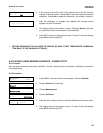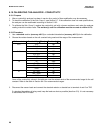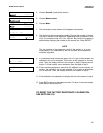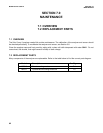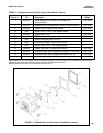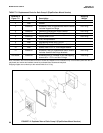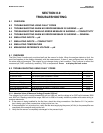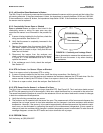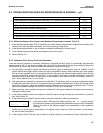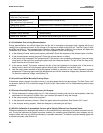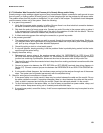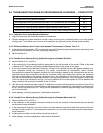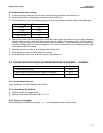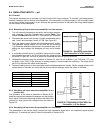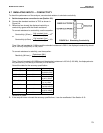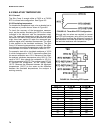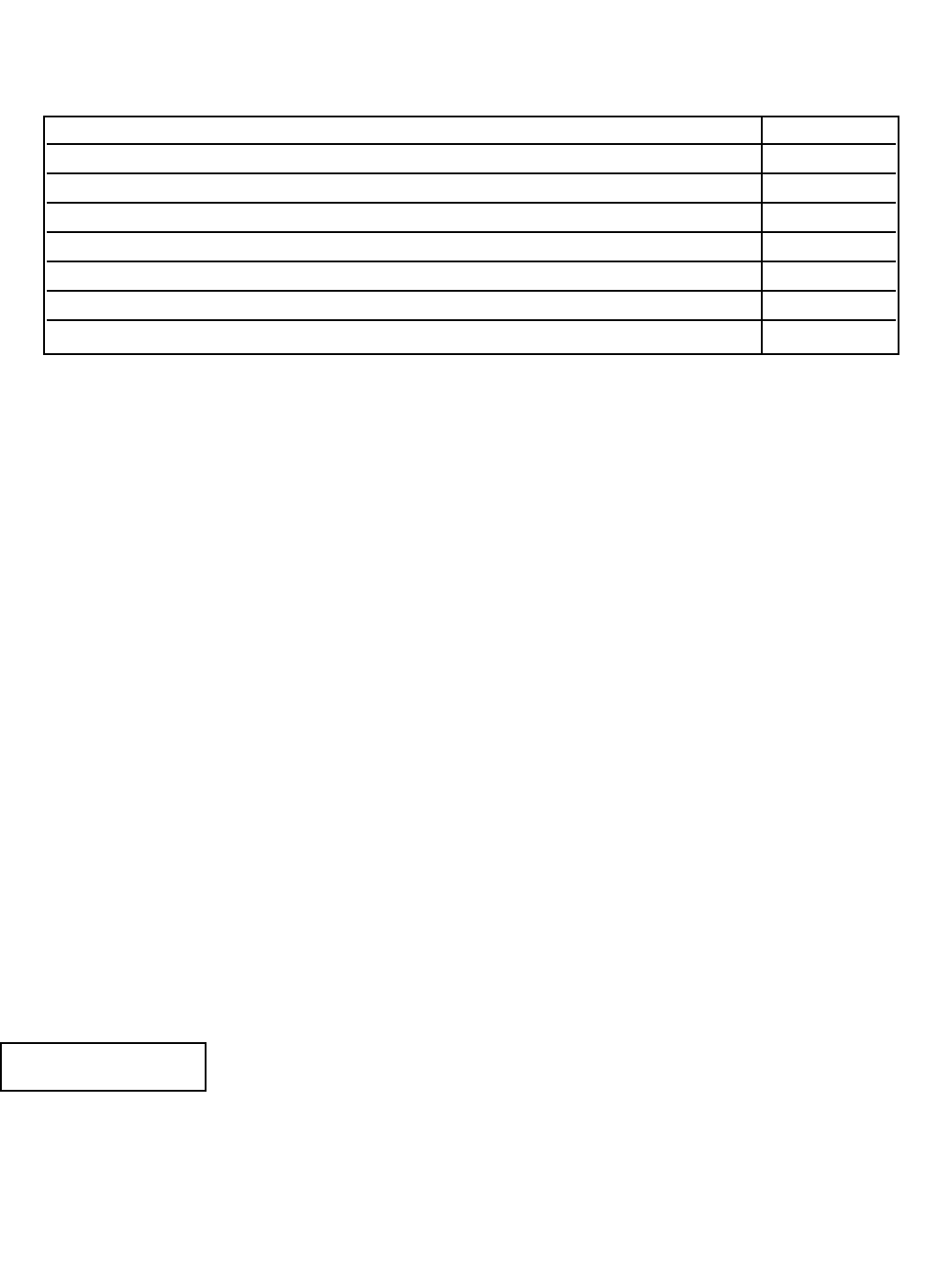
MODEL SOLU COMP II SECTION 8.0
TROUBLESHOOTING
8.3 TROUBLESHOOTING WHEN NO ERROR MESSAGE IS SHOWING — pH.
Problem See Section
New temperature during calibration more than 2-3°C different from the live reading 8.3.1
Calibration Error warning during two-point calibration 8.3.2
Calibration Error warning during standardization 8.3.3
Invalid Input while manually entering slope 8.3.4
Sensor does not respond to known pH changes 8.3.5
Calibration was successful, but process pH is slightly different from expected value 8.3.6
Calibration was successful, but process pH is grossly wrong and/or noisy 8.3.7
8.3.1 Difference Between Solu Comp II and Standard Thermometer is Greater Than 3°C.
A. Is the standard thermometer, RTD, or thermistor accurate? General purpose liquid-in-glass thermometers, par-
ticularly ones that have been mistreated, can have surprisingly large errors.
B. Is the temperature element in the pH sensor completely submerged in the test liquid?
C. Is the standard temperature sensor submerged to the correct level?
D. Review Section 6.2.
8.3.2 Calibration Error During Two-Point Calibration
Once the two-point (manual or automatic) calibration is complete, the Solu Comp II automatically calculates the
sensor slope (at 25°). If the slope is greater than 60 mV/pH or less than 45 mV/pH, the analyzer displays the
Calibration Error screen and does not update the calibration. Check the following:
A. Are the buffers accurate? Inspect the buffers for obvious signs of deterioration, such as turbidity or mold
growth. Neutral and slightly acidic buffers are highly susceptible to molds. Alkaline buffers (pH 9 and greater)
that have been exposed to air for long periods may also be inaccurate. Alkaline buffers absorb carbon dioxide
from the atmosphere, which lowers the pH. If a high pH buffer was used in the failed calibration, repeat the
calibration using a fresh buffer. If fresh buffer is not available, use a lower pH buffer. For example, use pH 4
and 7 buffer instead of pH 7 and 10 buffer.
B. Was adequate time allowed for temperature equilibration? If the sensor was in a process substantially hotter
or colder than the buffer, place it in a container of water at ambient temperature for at least 20 minutes before
starting the calibration. Using auto calibration avoids calibration errors caused by temperature drift. The ana-
lyzer will not update readings until the drift is less than 0.02 pH over 10 seconds.
C. Were correct pH values entered during manual calibration? Using auto calibration eliminates errors caused by
improperly entering data.
D. Is the sensor properly wired to the analyzer? Check the sensor wiring including any connections in a junction
box. See Section 3.2.
E. Is the sensor dirty or coated? See the sensor instruction manual for cleaning instructions.
F. Is the sensor faulty? With the main display showing, use or to scroll through
the information screens until the electrode impedance screen (at left) is displayed.
Refer to the table on the following page for an interpretation of the impedance
readings.
Another way of checking for a faulty sensor is to replace it with a new one. If the new sensor can be calibrat-
ed, the old sensor has failed.
G. Is the analyzer faulty? The best way to check for a faulty analyzer is to simulate pH inputs. See Section 8.6.
67
SRef Imp 123k^
Glass Imp 123M^



